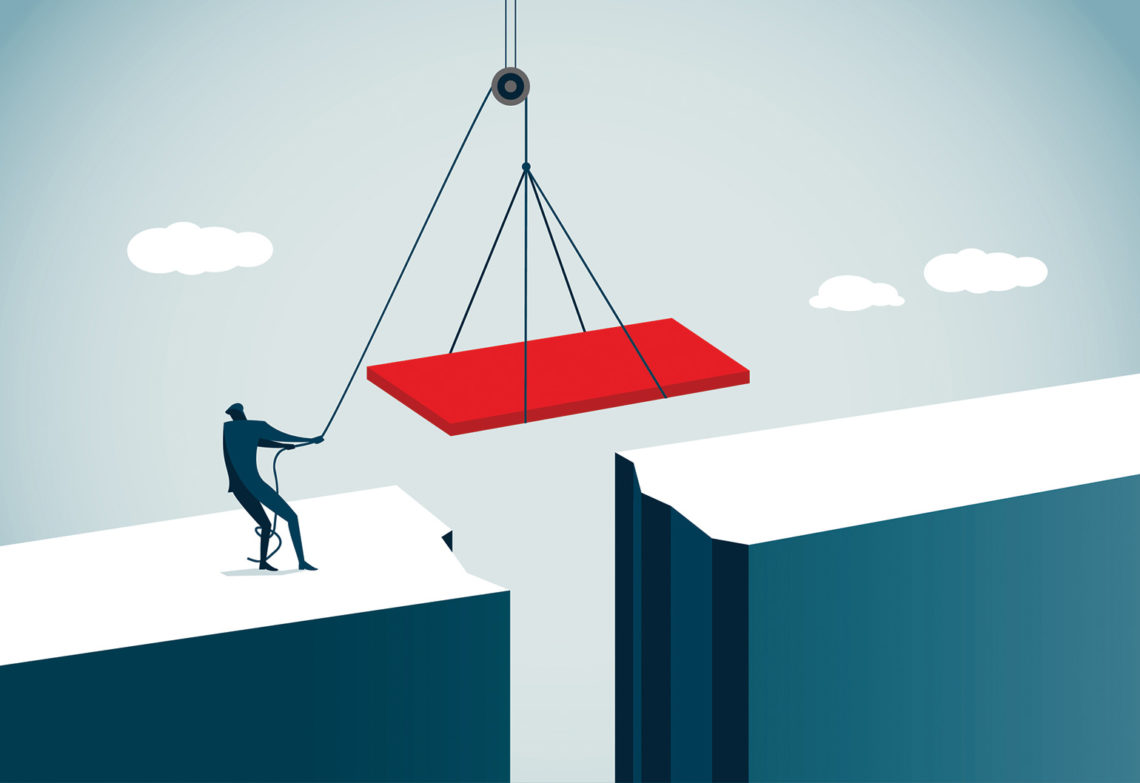Readers often write in to create magazine to debate and discuss important issues within the engineering profession. Here, one reader argues that it’s time for engineers to take their rightful place alongside policymakers.
In the face of recent crises, Australians have looked to experts for answers, re-instating a trust in expertise that appeared to have eroded in recent times.
When uncontrolled bushfires ripped through the country in the summer of 2019-2020, people placed their faith in the calm advice of bushfire experts such as NSW Rural Fire Service boss Shane Fitzsimmons.
When the coronavirus threatened the national health, Australians tuned in to Professor Brendan Murphy, the country’s Chief Medical Officer.
The vital element here was that these experts stood alongside policymakers, creating new co-dependent relationships that serve society. The benefits that engineering has brought to people are based on systems that have become incredibly complex, and society takes much of it for granted — flicking a switch for power, turning on a tap for clean water.
But these systems face cyclical challenges. After an initial period of societal transformation, systems become static and are driven by financial considerations.
But then along comes change — a crisis like the coronavirus, or deep challenges like climate change, population growth, urbanisation, the demographics of ageing and change in the nature of security threats. That is when innovation is required, and that is when engineers have to lead.
But they can’t do it on their own. They need understanding, mutual respect and empathy at the intersection of policy and engineering.
A sound technical idea on its own is not enough. Roman orator Cicero understood this 2000 years ago when he argued that all communication should prove, delight and persuade. Appeal to the heart as well as the head. Get the engineering and the policy to work together.
We have a terrific example right here in Australia — the Snowy Mountains Hydro-electric Scheme, one of the country’s greatest engineering achievements. The benefits of this project encompass clean energy, reliable food production and social inclusion. Two thirds of Snowy’s 100,000 workers were economic migrants, building Australia’s multicultural society.
Systems thinking engineer William Hudson led this endeavour, navigating the social and engineering responsibilities with a style that stressed cooperation between management and workers and scientific fact over opinion.
The crucial point here is that complex schemes should not be a matter of political dogma. This is vital as history shows that transformational change is often delivered under a state ownership model, bringing together the policy makers and engineers. Once static, cost reduction for the consumer is then often market driven.
So, how do we seize the moment to achieve this creative harmony? We need to look at three major stakeholders.
Policymakers
It’s time to fall back in love with big, bold and bipartisan ideas. Coronavirus gives us a common purpose, allowing policymakers to make bold decisions quickly, driven by the need to keep people safe.
This has increased trust. But our muscle memory will pull us back to our old ways of doing things, implicit in the phrase “bounce back”. Instead we need to “adapt forwards”, capitalising on this scarce moment when our collective thinking is unfrozen and change has rarely been more possible, for good or bad.
The state can and should lead innovation that meets the needs of people in a way that is equitable for all and recognises their ecological foundation — things like energy, water, transport, health, food and security. Innovation that meets the wants of people as consumers can rightly be left to the private sector.
We need our energy systems to lead us to zero carbon, our security systems to keep us safe, our health and social systems to cater for ageing populations, our transport systems to keep us mobile in rapidly growing cities — and the coronavirus is prompting us to ask how we can do all of these things with less dependence on global supply chains. We should at least be able to view this national conversation through the logical lens of an engineer, as well as the social lens of the policymaker.
Networking, hiring, training and advisory activities should seek to establish a new co-dependence and shared understanding between policy thinking and technical thinking, grounded in a mindset of “we can if”, rather than “we can’t because”.
Engineering organisations
Engineering organisations need to understand and respect the requirements that flow from a broad range of stakeholders and develop solutions that respond to these. The empathy to walk in others’ shoes will become an important part of the engineering lifecycle and key to effectively engaging with policymakers. This should be nurtured through recruitment, competency frameworks and leadership development activities.
For engineering to have its greatest positive impact, we need people who can understand each other’s “why”. This can only be achieved through diversity, delivering both equity and better engineering.
Individuals
Diversify your professional networks. If we are to forge a shared understanding at the intersection of policy and engineering, we need to go beyond our comfort zones and make less obvious connections.
Continually develop your communication skills. Recall Cicero’s maxim that all communication should seek to prove, persuade and delight. The cooperation during the pandemic has demonstrated this. We need to bring this mix of persuading and proving to more of our communication. Engineers have a responsibility to make the complex accessible. Policymakers have a responsibility to listen to the sometimes quieter voice that stands up for technical complexity.
If we can bridge the gap between policymaking and engineering expertise, we can have new conversations that are equal to the challenges society faces. There has rarely been a better time, or a more important time, to do so.
Jonathan Armstrong
Australian Director, Frazer-Nash Consultancy
This article first appeared as “Bridging the gap” in the November-December 2020 issue of create magazine.



